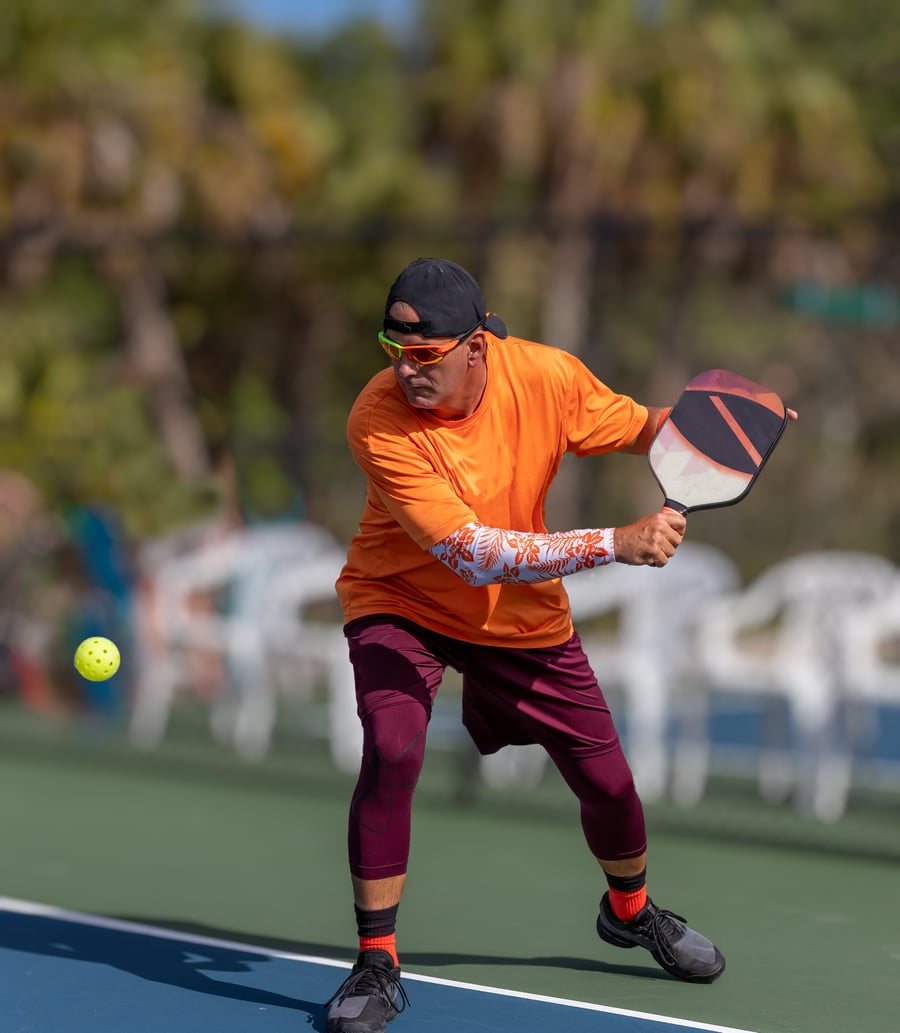Back in the day, I would attempt to play tennis with a couple of friends at a local court. We were just three people rotating between games. At that time, I had never received any sort of racquet sport coaching and so the understanding on how to execute an effective backhand was just not there.
To this day in tennis, I’m not sure I have all of the mechanics to consistently hit low, effective backhands. Sometimes I’ll go for a two-handed shot and but otherwise I feel pretty good swinging the one-handed Federer style shot (although mine is absolutely nothing like his backhands).
In pickleball, what I know is that there’s no need to fear the backhand side and in fact, favouring that side while playing at the net is a great way to maintain maximum area coverage.
I do see quite a few players struggling with their backhand I feel that the best thing to do is start to understand the mechanics of a proper backhand and then put it into practice, let's dive in...
Defense
I like to share with my students that by using the backhand while playing at the non-volley line (NVL), it often provides the best chance for a player to defend offensive attacks.
By keeping an open stance at the line, we maintain a laid back, but stable wrist to open up the paddle face, rather than turning the body on an angle and thus, closing yourself off to a certain part of the court.
Defending on the forehand is often difficult simply because the amount of area one can cover is minimal in comparison to defending with the backhand. This tactic alone is reason enough to get comfy on the backhand side!

Net Play
Cross-court dinks can cause trouble for the players who like to avoid the backhand. It took a while for me to understand that there is a rhythm with backhand dinking; and I also clearly remember someone telling me early on “you’re not quite there yet, but it will eventually click for you and when it does you will cause trouble”.
At the time, I really just wanted that person to tell me how to do it right, to just fix me, but even with some helpful guidance, I’m not sure it would have clicked any faster.
For me at least, I had to feel out the entire process in order for it to actually click. What I can share with you is that to backhand dink with an open body stance, I engage my lower body a lot and the motion that guides the ball over the net is coming from the shoulder.
I really want to emphasize how much this shot really requires a stable wrist and the majority of the motion being generated from the shoulder.
Baseline Groundstrokes
Are serves and returns to your backhand eating you up? An important factor when hitting a backhand on the baseline is to close off the body and lean into the shot by leading with the dominant foot.
For right handed players, this means you’ll lead with the right foot and right shoulder. Set up early, the moment you can identify the ball is headed towards the backhand side and be sure to give yourself more room to step into the ball.
Always aim to make contact with the ball in front of the body, not after it has bounced and is beside you!
Running around to the forehand can show an immediate sign that you think the backhand is weaker and you’re actively avoiding it.
That said, at the higher levels and certainly at the professional level, running around the backhand gives a better angle. The difference is that the higher skilled players have the backhand dink, they are just choosing a different approach.
%20(1).jpg?upscale=true&width=1120&upscale=true&name=Ball%20on%20court%20stock%20pic%20(No%20-%202011279028)%20(1).jpg)
This article was taken from our 'Control the Kitchen' Newsletter, if you're interested in receiving more content like this, please feel free to sign up using the subscribe section located at the bottom left of this page (or underneath the article if you're on mobile), thanks!